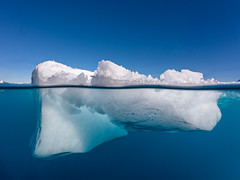In April 2011 I wrote a blog about my observations of the difference between Norwegians & Swedes. Turns out this is one of my most popular blog posts based on Google hits, so I thought I’d revisit the topic for my interested audience. I’ve now been working in Norway for two year and lived in Sweden for almost four years, so I’d say that my knowledge base is pretty robust at this point. That being said, these are just observations from a lonely American and should be taken with a grain of salt… 🙂
Clothing
Swedes and Norwegians are both fashionable peoples. The global clothing giant H&M (Hennes & Mauritz) is a Swedish company that has done for fashion what IKEA did for home furnishings; modern design, decent quality and good prices that is available to “everyone” (for fun, think about how this business philosophy connects to Swedish social policy). Helly Hansen, the outdoor sport clothing giant is a Norwegian company that is world renowned for its high- quality ski gear (again, very appropriate considering the nation’s infatuation with skiing :)). In both countries, pants are worn too tight for men and are way more expensive than anywhere in the US.
The Swedes and Norwegian’s differ in what they consider fashionable. In Stockholm, it almost feels like a tight fitting country club where everyone, and I really mean everyone, floats thru the city with the latest fashion trends and overpriced bags (men & women). It’s sophisticated and well put together, but not as pretentious as you would think at first glance. The Norwegians have a slightly different approach. They are also wearing high-priced clothing, but it’s usually a bit “edgier” (think a mix of sportswear and skater) and often it’s more about functionally than the latest style. Norwegians wouldn’t blink an eye at spending $1500 on a winter jacket. Moods of Norway is a great example of this.
Living and working in both places has definitely influenced me to “step up” my game in this area. Gone are the bar t-shirts, sandals and fleece jackets. In are the Polo shirts, Tweed jacket and deck shoes. I look forward to someday getting back to my California “beach wear” but for now it’s fun to be a fashionable European.
Language (Swedish Chef)
Swedish & Norwegian are different languages but share many words. Norwegians usually have no trouble understanding Swedes but the Swedes can sometimes struggle with Norwegian. This is mainly due to the high level of Swedish TV broadcast in Norway. On a side note, if you ever wondered why both countries are fluent in English, one could argue that this is due to their fantastic education systems or that is because most of their TV broadcasts are in English and not dubbed (like in France, Germany, and Italy). I’ve traveled a lot in Europe and there is a direct correlation between the amount of English on television language and the level of English spoken by the citizens. Anyway, the Swedish and Norwegian languages are very similar, enough so that my knowledge of Swedish can help me get by In Norway.
Now, the more interesting difference (for me) is the way in which the languages are spoken. Norwegians speak with roller coaster like inflections that are very pronounced compared to Swedish. The best way I can describe this is to say that the Swedish Chef sounds more Norwegian than Swedish.
“Yorn desh born, der ritt de gitt der gue, Orn desh, dee born desh, de umn bork! bork! bork!”
Social
Both Norwegians and Swedes are reserved in their approach to new people. They tend to let you do most of the talking initially which gives them the opportunity to feel you out or to confirm a stereotype in order to find the appropriate way of “interacting” with you. This might sound a bit strange, but Scandinavians usually have a pretty good read on other cultures, while other cultures generally are a bit “in the dark” about the Scandinavians. To be honest, it’s a bit unfair but that’s another blog post… Anyway, when it comes to this initial categorization, it feels the Norwegians are a bit less judgmental, but also more naïve, regarding people from other countries. For a large portion of Norway’s history, its people have been isolated by geography due to the physical environment (small fjord-based communities insulated even within Norway) and isolated by lack of travel outside Norway due to cost (Norway was a poor country until the discovery of oil, more on this in the next section). In my experience, this lends Norwegians to be friendlier during initial meetings but a bit constricted in the way they ‘frame’ others.
Swedes on the other hand tend to be quite “ traveled” as a society, from both holiday vacations and business trips. I read a business article a while back that said Swedes are some of the most connected people in the world. This is partly due to the economic conditions in Sweden but also its distant history as a world power. This level of contentedness allows Swedes to have a pretty good idea of cultural tendencies (especially, when it comes to Americans and Western Europeans), but it takes them a bit of time to open up to you. Once they understand where you’re coming from, Swedes are open, courteous and fun.
It’s been said that once you’ve become friends with a Norwegian or Swede it’s a lifelong relationship. They’re going to put you to the test over an extended period of time, but once you’re in – you’re in. This is not the easiest path for new people (like me) and I can tell you from experience that making friends in both places is extremely hard. However, I can say that the friends I do have in Sweden and Norway are very special people and I look forward to having them as a part of my life regardless of where I live.
Old vs New Money
This may be the most “sensitive” topic in this blog. Sweden and Norway are both healthy countries economically. I’ve lived in Stockholm and worked in Stavanger (one a capital city, one an “oil town”) for a majority of the recent recession and I can tell you that in my experience, neither place was greatly affected. This is mostly due to fiscal policy, but that’s not really what I’m talking about here.
Sweden has been relatively well off for hundreds of years. Enormous timber and Iron ore reserves have fueled steady growth for the Swedish society, which has given the country an aristocratic feel. Swedes are proud of their fantastic public infrastructure, uniform healthcare system and generous social benefits. This has been the product of many years of social policy engineering and things like four weeks mandatory vacation are considered rights by the Swedish people. This long term accumulation of wealth and benefits has bread a society of mature and sophisticated people. Swedes tend to have a mild sense of entitlement when it comes to quality of life, but absent is their need for huge amounts of material wealth.
Norwegians by contrast have been quite poor for a majority of the country’s history. Norway is an extremely beautiful country to visit, but not the best place if you have to conduct modern business. For instance, the flight from Stavanger to Oslo takes about 45 minutes but to drive would take about 7 hours. Norway’s fjords and lack of above ground natural resources has kept the country’s majority working class centered around small towns, separated economically from the material wealth of other countries. This started to change dramatically with the discovery of oil on the Norwegian continental shelf (I’ve actually been on Norway’s first offshore oil rig). Today Norway is an economic powerhouse with wealth unimaginable to its citizens just 60 years ago. Before going on, it’s important to note that Norway is THE model country in the world in managing oil wealth. A massive influx of funds from oil often cripples countries, which are commonly referred to as the “curse of oil.” Norway has placed a majority of its oil money into a reserve for future generations, as of today that’s about $150,000 per citizen.
Norwegian salaries are quite high and despite extreme taxes, Norwegians are pretty wealthy people. I tend to think or Norwegians as “new money” because they often behave like people who, well, have recently come into money. This is the best general way I can describe it: do you remember the character Molly Brown in the movie Titanic? She was the wealthy lady that came from a working class background, strong and resourceful but a bit unpolished. Without going into further detail, I think you can get a picture of what I’m talking about…
In both cases, I would say that Norwegians & Swedes are some of the most sensible, responsible and caring people I have ever come in contact with. They both have strong moral compasses that are reflected in their public policy and how they conduct themselves on the world stage. They are small countries in terms of population, but make for great role models in building societies that protect individual freedom while taking care of the common good. In my opinion these countries deserve more of the limelight.












Enjoyed this post .. look forward to more.